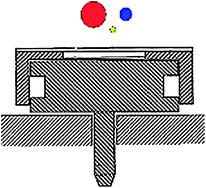Passive aerosol sampler for particle concentrations and size distributions
Abstract
This research evaluated the UNC passive aerosol sampler as a tool to measure particle mass concentrations and size distributions. The exposure scenario represented high concentrations and exposure periods of a few hours. Mass concentrations measured with the passive sampler were compared to concentrations measured using both a dichotomous sampler and an aerodynamic particle sizer (


 Please wait while we load your content...
Please wait while we load your content...